This is a continuation of a series of posts on the Nikon D850. The series starts here. You should be able to find all the posts about that camera in the Category List on the right sidebar, below the Articles widget. There’s a drop-down menu there that you can use to get to all the posts in this series; just look for “D850”.
In the previous post, I reported on my progress in developing a software tool to process image sets made of a LensAlign target to produce the sort of results that FocusTune does: focus distance versus AF Adjust setting. I promised that I would next take the tool to places that FocusTune doesn’t go. I’m delivering on that promise now.
I added some code to my Matlab program to analyze a set of images taken at the same AF Adjust setting and different f-stops and plot the location of the focus distance as a function of f-stop rather than AF Adjust setting.
I tried it out on a set of images from the Nikon 105 mm f/1.4 lens on a D850 at 10 feet, ISO 64, focusing once manually at the beginning of the series, and making 10 or 11 images at the whole f-stops from f/1.4 through f/8. Here’s the result for the AdobeRGB green channel:
All image points are plotted, 10 or 11 for each f-stop. Back-focusing is indicated by positive y-axis numbers and front-focusing by negative ones. I focused the first image with CDAF wide open, and got a small amount of front focusing, but I’m not totally confident in the location of the target plane right now, so don’t put much stock in that. The green line is the average for each stop. As you can see, the spread in the data for each stop is quite small, with the possible exception of one point at f/4. This gives me some confidence in the tool that I’ve written.
You can also see quite a bit of focus shift as the lens is stopped down, which I’ve observed using other analysis methods. By f/4, the shift has virtually ceased, according to these measurements.
Now let’s look at all three AdobeRGB channels:
You can see that the red channel is back-focused with respect to the other two channels. This is a consequence of the 105/1.4’s longitudinal chromatic aberration (LoCA).
When I use the D850’s contrast-detection autofocus (CDAF) on every shot in a similar series, here is what the green channel data looks like:
Note that the vertical scale if much expanded; the CDAF spread over all stops is much lower than the focus-once spread.
Here are all three color planes:
It looks like CDAF is optimizing the green focus at the expense of the red channel. That is exactly what it should do.
If we use phase-detection autofocus (PDAF) for each shot in a similar set, here’s what we get for the green channel:
Note that the average focus shift with f-stop is about the same quantitative as with the focus-once graph at the top of this page. That indicates to me that Nikon is not compensating for the lens’ focus shift in its D850 PDAF firmware.
Note also that the spread for the PDAF data point at each f-stop is greater than with CDAF. Simply put, Nikon’s D850 PDAF is not as consistent as the CDAF method.
Here is the result for all three channels:
In this chart, we can see both the LoCA and the focus shift with aperture.
Now that I have what appears to be a good tool for analysing AF system accuracy and consistancy, as well as LoCA and focus shift, I can — and will — apply it to other lenses.
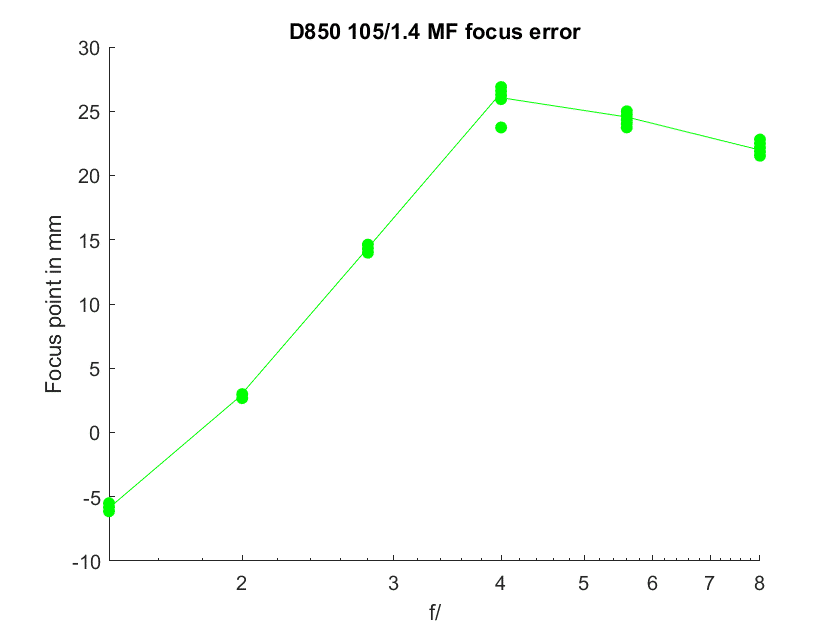
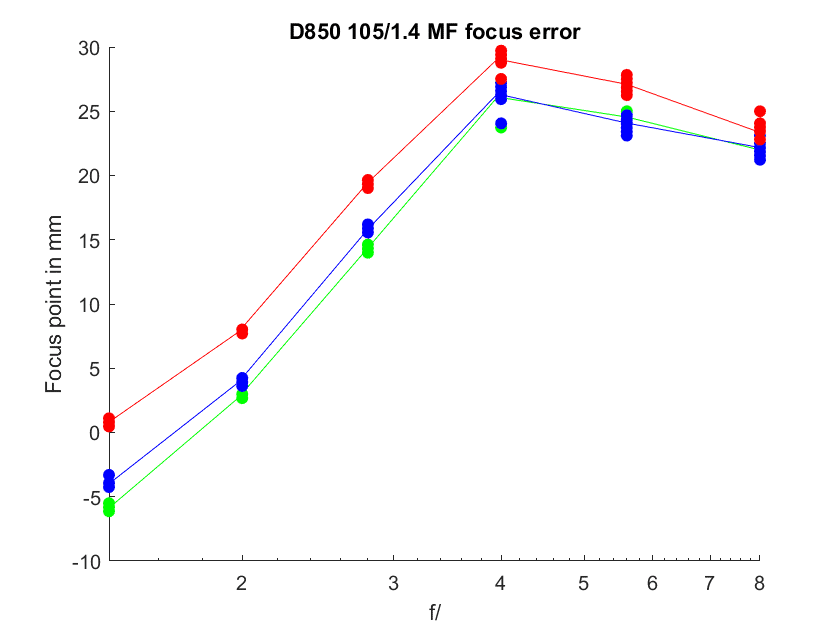
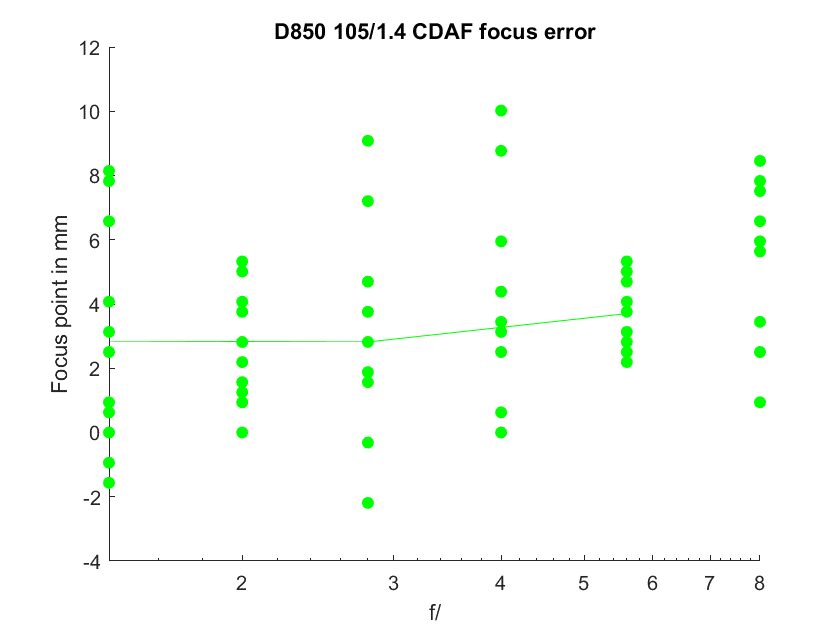
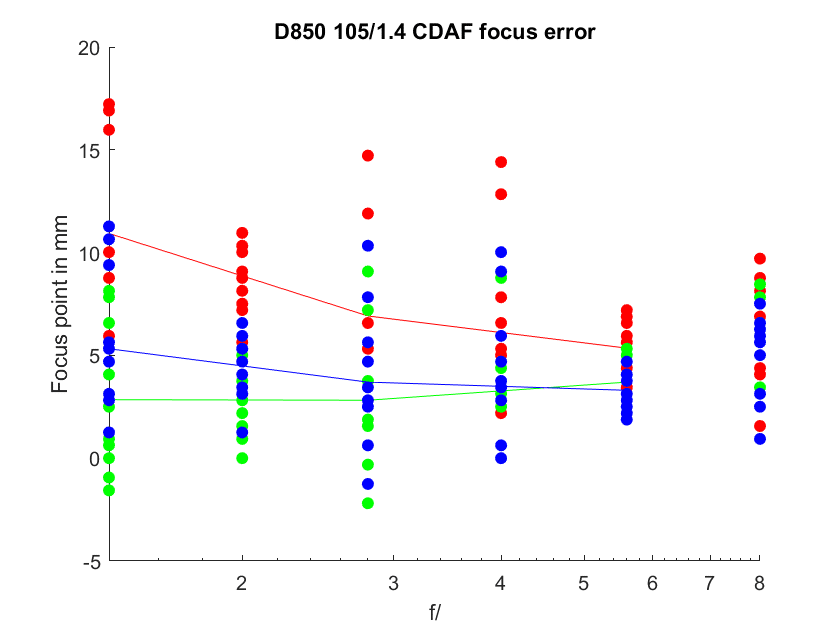
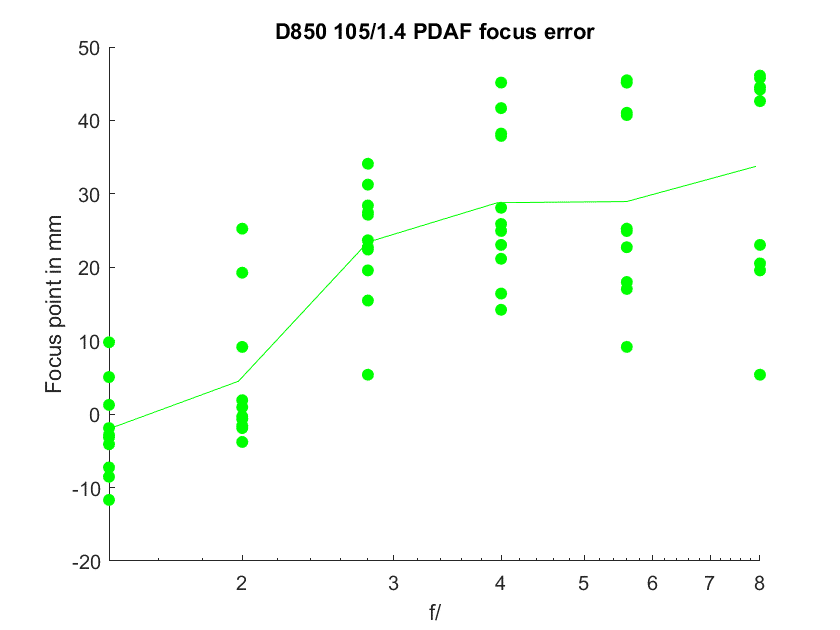
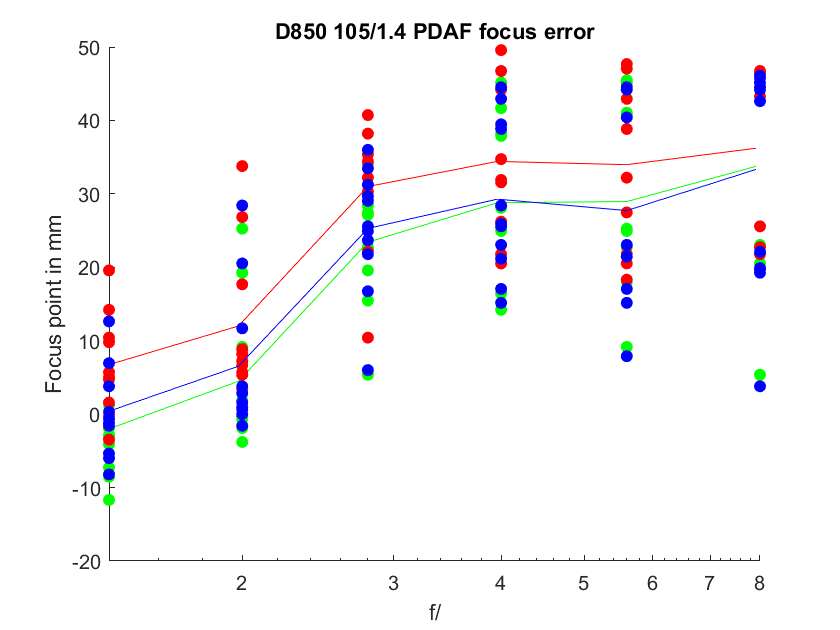
Jim,
Have you ever looked at focus shift and the 3 adobe channels for Apo lenses ?
Would they be tighter ?
Thanks –
I’ve looked at LoCA using raw color planes many times.
First, I believe the identifier “apo” has been appropriated by the marketing folks and they use it whenever they darn well please.
For example, the Leica 90/2 Apo-Summicron M ASPH is an excellent lens, buts it’s got a fair amount of LoCA.
http://blog.kasson.com/the-last-word/another-medium-tele-test-summicron-loca/
The Otus 85 does not:
http://blog.kasson.com/the-last-word/another-medium-tele-test-otus-nikon-loca/
But having low LoCA doesn’t keep the Otus 85 from having considerable focus shift.
http://blog.kasson.com/the-last-word/another-medium-tele-test-otus-nikkor-focus-shift/